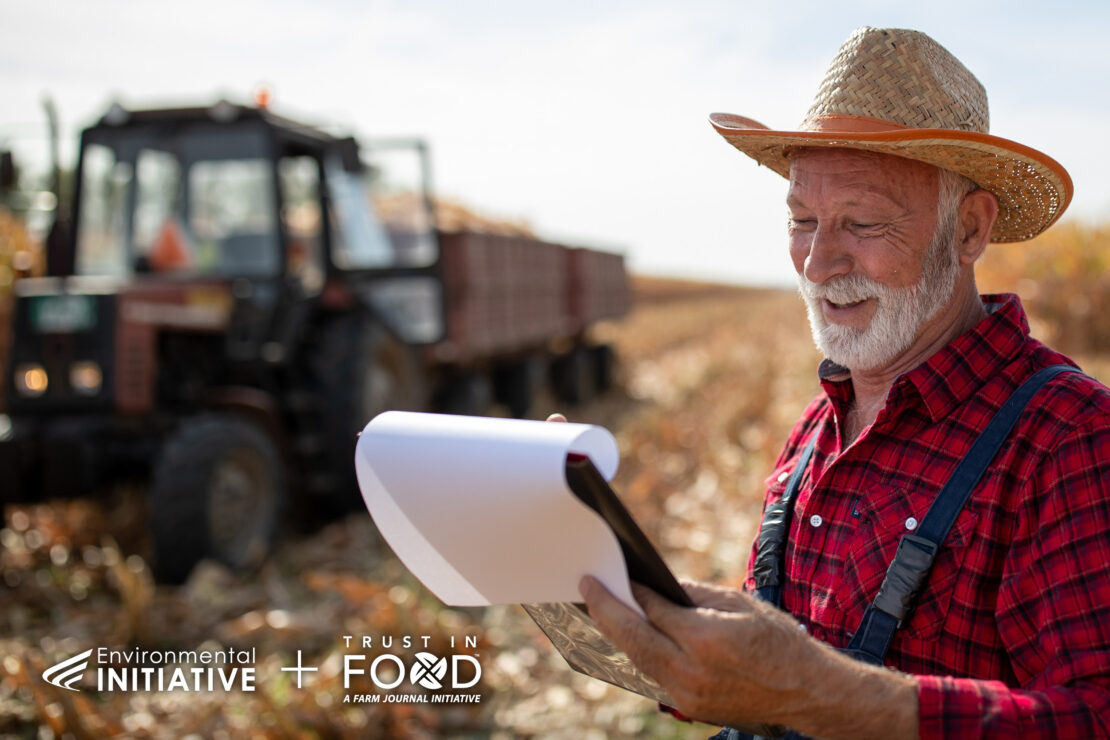Tailored workshops help conservation agriculture professionals increase engagement

Environmental Initiative and Trust in Food™ are now providing workshops to help conservation agriculture professionals accelerate voluntary program engagement among producers.
Workshop availability follows the announcement of ReachFarmersFaster.org, a web-based, interactive learning tool that organizes the team’s methodology into a replicable five-step process.
The tool currently features a case study of over 55,000 row crop farmers’ unique hurdles, motivations, and values in Illinois, Iowa, and Nebraska. It then captures the partners’ successful use of this data to inform a research campaign focused on producers in the area.
“We know that the adoption of regenerative agriculture has been constrained by limited producer acceptance, despite the known economic and environmental benefits,” said Deborah Carter McCoy, partnership and communications director at Environmental Initiative. “Reach Farmers Faster workshops are an opportunity to explore a new way to reach our goals by putting producer values at the center of our outreach.”
Workshop overview
Workshops are offered in 90-minute, three-hour, and five-hour formats, depending on the needs of the requesting organization.
In each session, the staff team will share high-level insights from case studies and guide participants through data-informed methods to renew farmer outreach strategies. Downloadable worksheets from the learning tool will provide a foundation for groups to work from in the workshop and back at the office with colleagues.
While the online case study is currently specific to corn and soy farmers, the process is applicable to a wide range of commodity types. The study will soon expand to include insights from Great Plains ranching and grazing.
Organizations may use sample data sets or provide their own data for a more tailored workshop experience. Hands-on, real-world application of the learning tool will allow participants to:
- Describe key elements of how data-driven communication supports comprehensive behavior change campaigns.
- Understand how goal setting for farmer engagement is linked to the expansion of conservation agriculture practices.
- Identify, access, and apply data to develop tailored strategies for producer engagement.
- Identify best practices to use when preparing engagement materials.
Learned concepts can increase the effectiveness of a range of outreach efforts, from one-on-one conversations and field days, to program recruitment materials and community-wide communications.
Workshop approach
The presentation team will begin with a classroom-style overview of the Midwestern row crop case study. Attendees will reflect on open-ended questions individually or engage in small groups. This initial exercise is designed to allow participants to identify where there has been limited program uptake from producers, especially in their own work.
Using these opportunities as a foundation, participants will be guided through the engagement design process. Much of the workshop will take on an interactive approach where presenters review a step from the Reach Farmers Faster tool and then lead a related activity.
In “Step 1: Establishing Goals,” the presenters will describe the objective they identified—helping producers understand, see value in, and feel capable of change. Presenters will then explain how they used that shared purpose in structured goal setting and success measurement.
Afterwards, attendees will identify their own goals and intended outcomes, like increased producer acceptance of cover crops within a practitioner’s supply chain.
Next, in “Step 2: Understanding Producers,” presenters will provide a snapshot of the Midwestern corn and soy producer persona crafted for their work to increase awareness of the opportunities aligned with conservation agriculture. The insights shared will highlight how farmers’ motivations and hurdles impact their consideration for practice change.
From this snapshot, attendees will learn what to include in their audience research, such as characteristics of producers eligible for their program of focus, as well as those producers’ current perceptions of regenerative agriculture.
Subsequent steps teach participants to use those defined goals and audiences to design messages and creative assets, including landing pages, social media, emails, and program materials.
“Step 3: Develop Messages” leads attendees through their journey of designing clear, compelling messages that align with producers’ needs and priorities.
Longer sessions create space for participants to develop messaging and imagery that emphasize the benefit and value of their own programs and move producers from a place of awareness to action.
“Step 4: Choose Engagement” shares findings about what themes and messages resonated and what messaging platforms had the greatest reach.
Also dependent on workshop length, attendees may use these lessons and a worksheet from the online tool to develop a timeline and select tactics for their program.
The final section, “Step 5: Assess Impact,” provides techniques for tracking how effective a campaign is at prompting producers to connect with conservation practitioners about available programs.
Participants can expect tips on data collection, searching for trends, gathering feedback, and making improvements.
Connect with us
Contact Deborah Carter McCoy or Emily Haley with workshop enquiries or to learn more about the project. For more insight on upcoming opportunities, sign up for the Environmental Initiative newsletter or follow us on LinkedIn, Instagram, or Facebook.